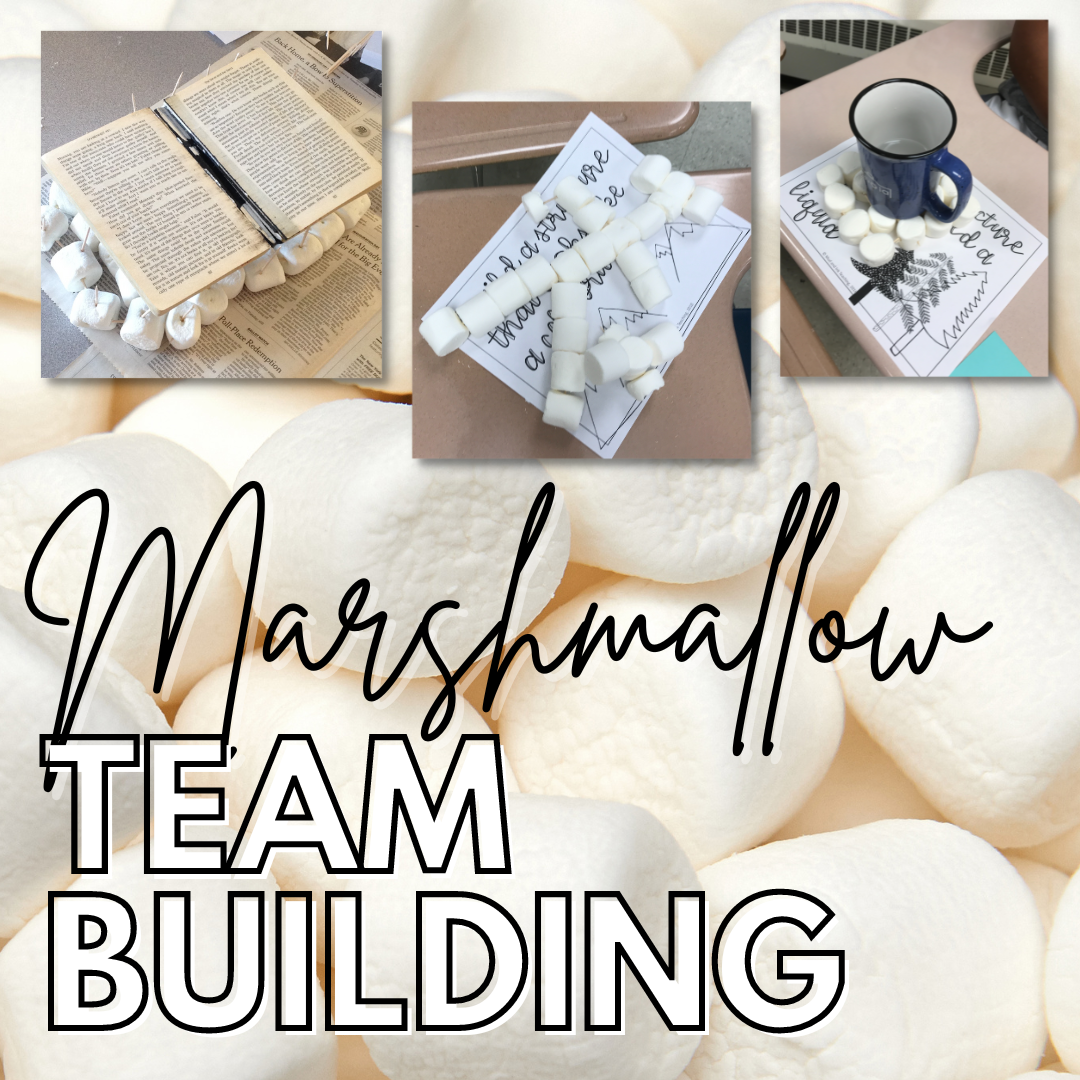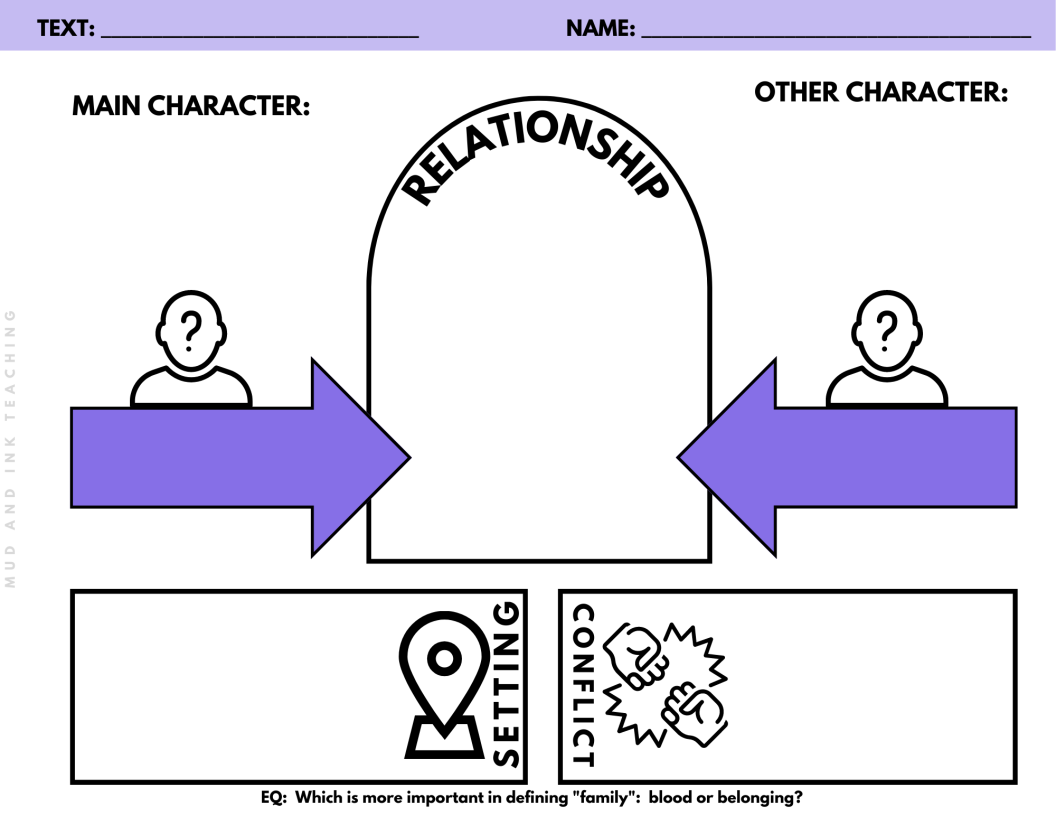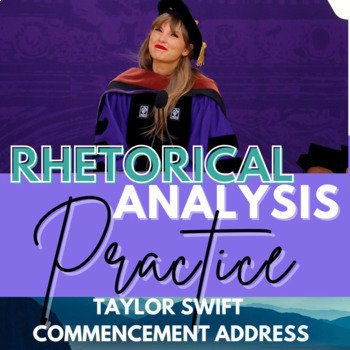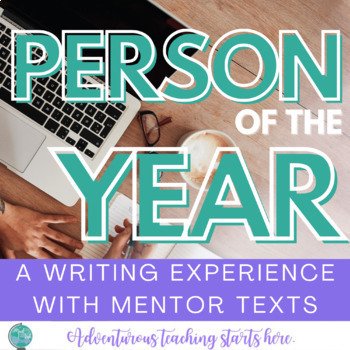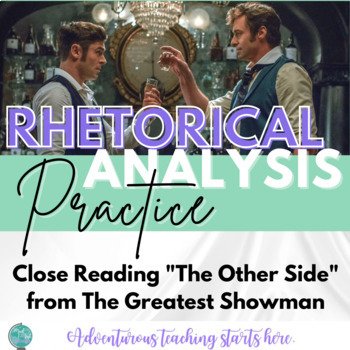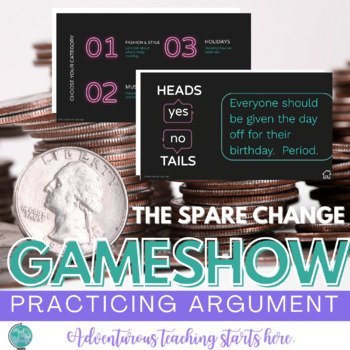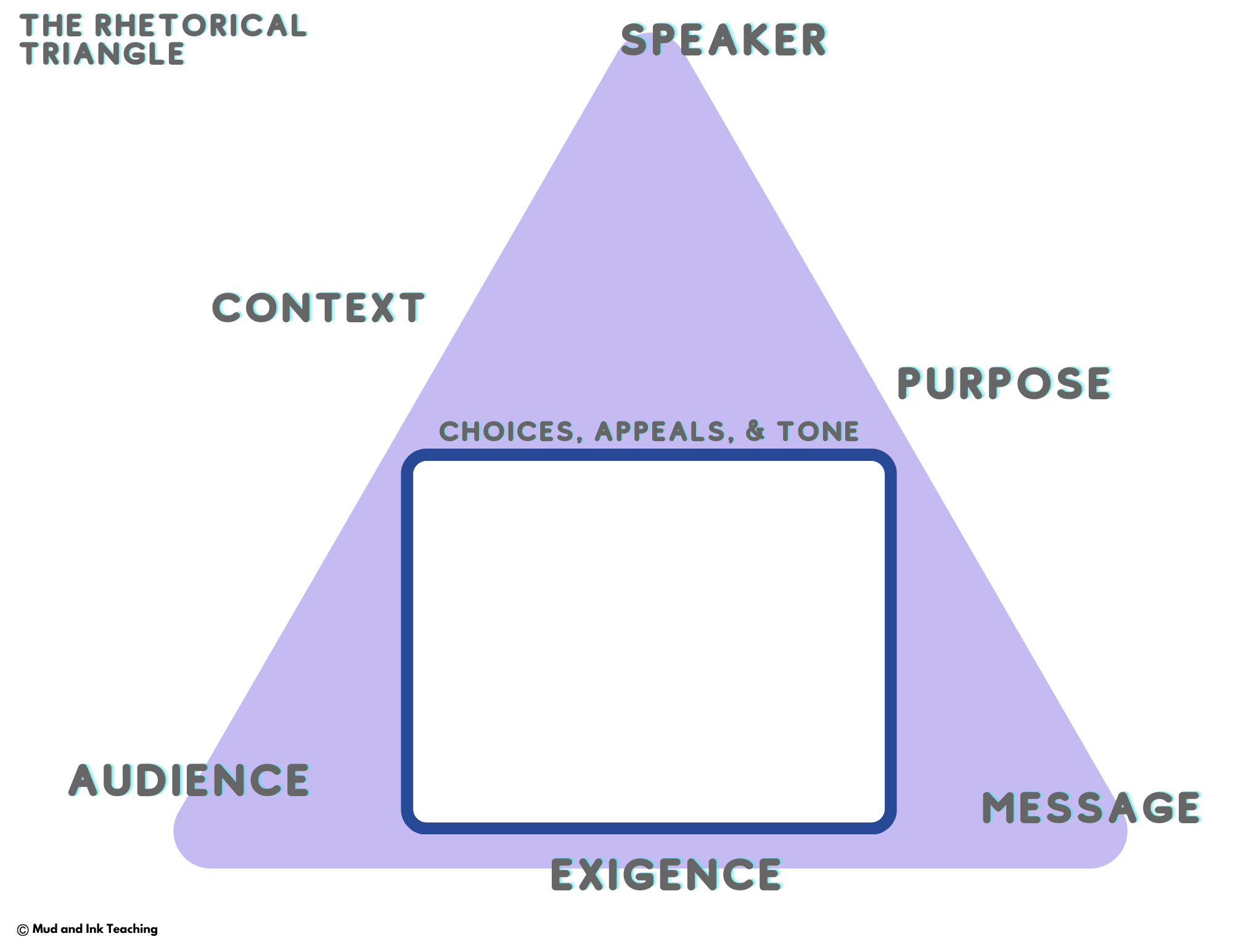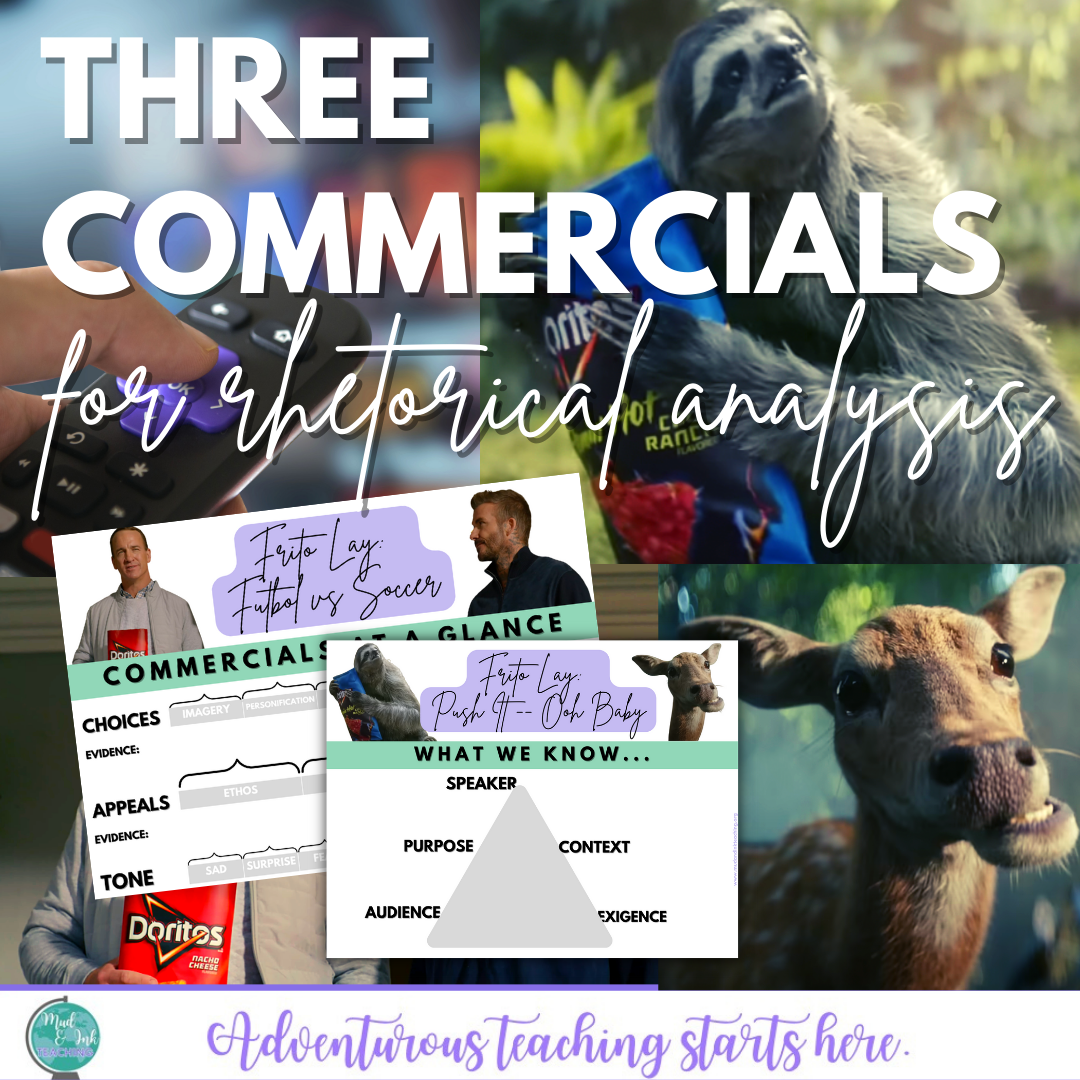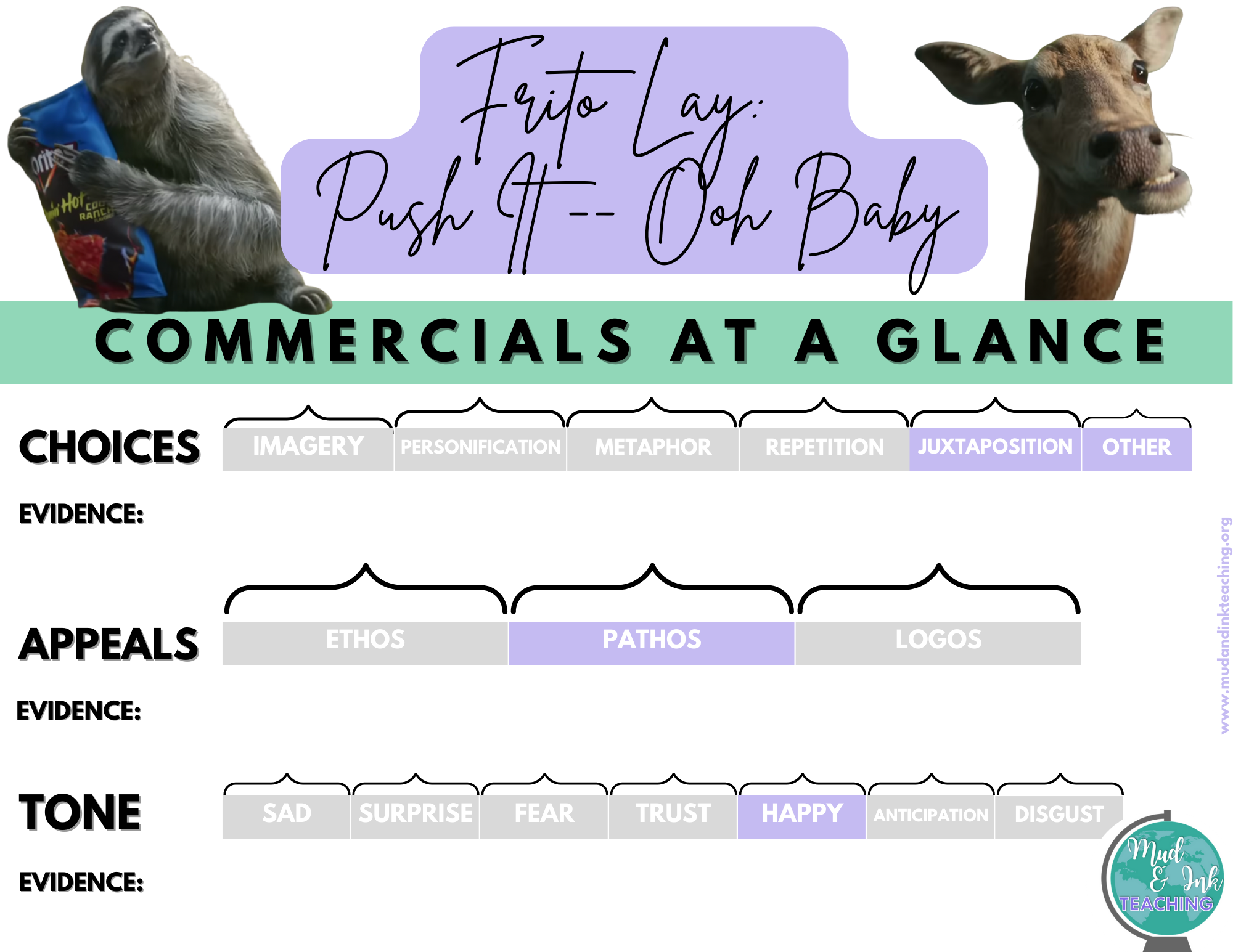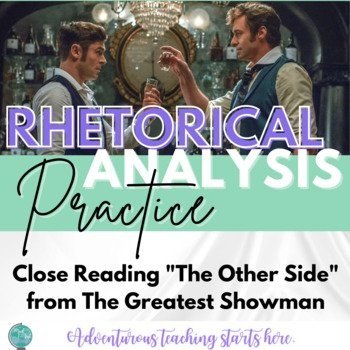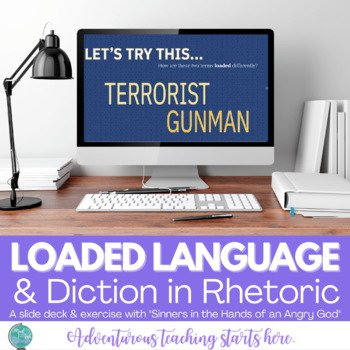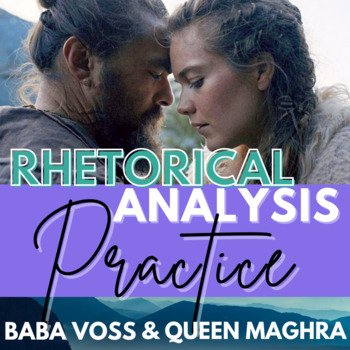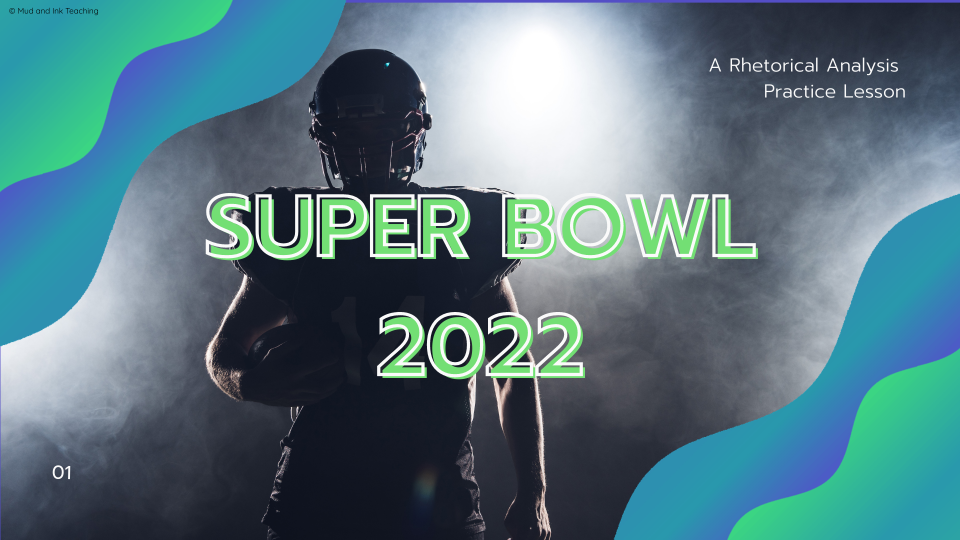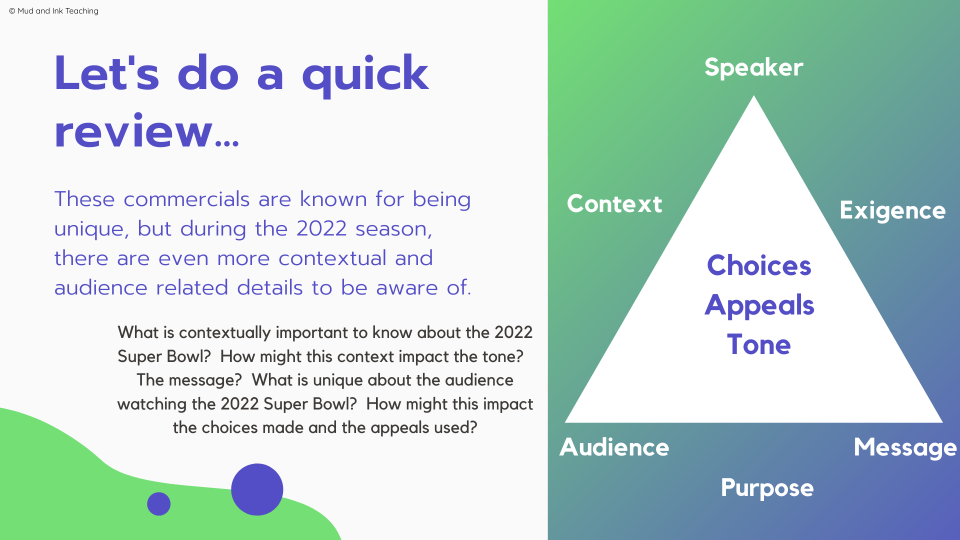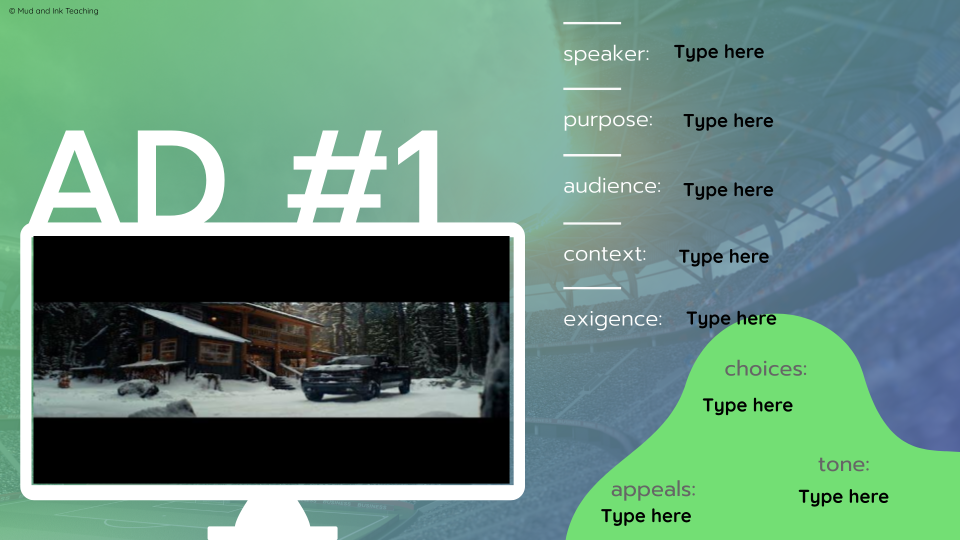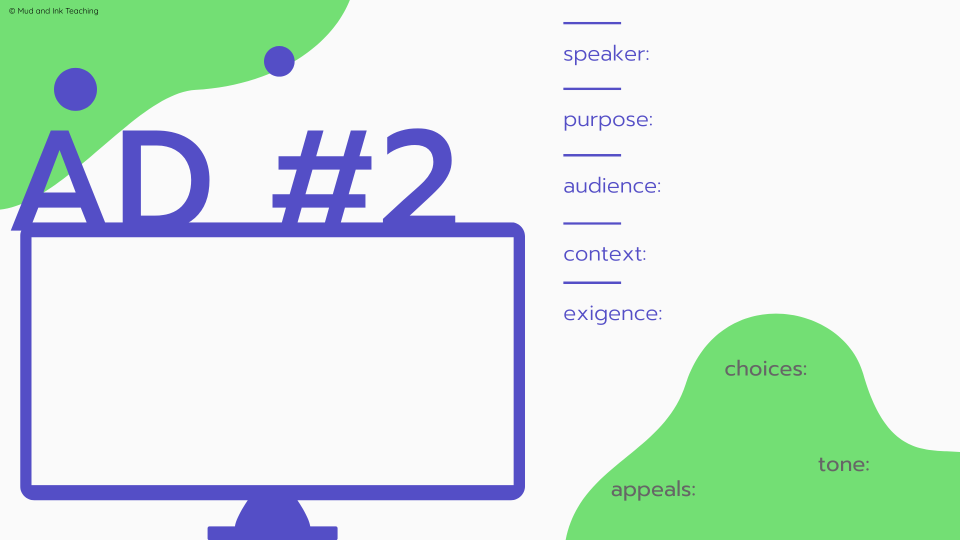
ADVENTUROUS TEACHING STARTS HERE.
Life's Blueprint: An ELA Lesson Honoring Dr. Martin Luther King Jr.
Dr. King’s legacy is especially powerful in the ELA classroom: his words, his rhetoric, and the passion with which he speaks them is not only worthy of study in its own right, but the overlaps into our content area make the analysis of the layers of his work that much more rich and impactful. Here is a free lesson walkthrough for your middle or high school English class celebrating Martin Luther King Jr.’s birthday.
Life's Blueprint: An ELA Lesson Honoring Dr. Martin Luther King Jr.
Dr. King’s legacy is especially powerful in the ELA classroom: his words, his rhetoric, and the passion with which he speaks them is not only worthy of study in its own right, but the overlaps into our content area make the analysis of the layers of his work that much more rich and impactful.
If your experience is anything like mine, I found myself a bit stuck in trying to find something different to read and analyze in honor of his birthday. By the time students got to me, they had already read or worked through “Letter from Birmingham Jail” and “I Have a Dream”, so a few years back I set out to find another great work to study that would be fresh for students and give them a new angle and understanding of the breadth of Dr. King's work.
What's your life blueprint?
This speech is a fantastic option if you find yourself in a similar position. Take a listen below:
I created a sketchnotes activity for you to use with some other lesson plan suggestions. I'm passing that along to you as just a thank you for being here and because sharing this work is so very important and I don't want anything to stand in the way of getting it done! On a seasonal note, this is the perfect e-learning lesson if school is called off around a snowy or brutally cold MLK day (it’s happened in Chicago before!).
LISTENING WITH SKETCHNOTES
The art of the sketchnote listening activity is that it takes us away from the “fill in the blank” mentality. With sketchnotes, students can actively listen, doodle, draw, sketch, and write in a way that vibes best with their brain’s pace and what emotionally resonates with them. You can play and pause the speech for each number to give students a chance to catch up, to share out loud, or to turn and talk to a partner. It’s important to note that each of the numbered components is NOT a question, rather, they’re phrases from the speech that serve to help students see the outline of his claim at a glance. The space on the page is for them to fill in with the details, evidence, and other words that exemplify that particular portion of the speech.
COMING BACK TOGETHER
Maybe students were turning and talking at a few moments during the speech, but if they haven’t checked in yet, give them that chance. Let them process in a small group table or in pairs through each of the three components of the speech.
Next, create an opportunity for full class discussion. I like to set up a post-it note gallery walk. I place these posters at the center or top of a giant post it note. Then, students move around the room to each of these pull quote posters to:
share a connection
add on to the idea
illustrate how this looks in their mind
elaborate with more detail
When the timer goes off (4-5 minutes is sufficient), students rotate to the next pull quote poster to add their thoughts. As they move, they can bring their sketchnotes with them to reference as they think through the speech with a larger context.
Finally, once students have rotated through each of the posters, you are set up to lead a large group discussion poster-by-poster soliciting students to share their contributions and discuss the speech even further.
GETTING STARTED
I set this lesson up and made the sketchnotes for you already! All you need to do is download them below.
THE IMPORTANCE OF BIPOC LEADERSHIP
The MLK Jr. holiday shouldn’t be the first time that a person of color is celebrated, highlighted, or studied. In the North American calendar, Dr. King’s birthday falls in January, and if we’ve gone an entire semester without looking at non-white leaders and cultural icons, that’s something important to reflect on.
There are opportunities all the time to give students access to meeting and researching the lives of powerful Black American “Influencers”. Before social media culture, activists, leaders, and speakers in the Black community were working tirelessly to shape the cultural landscape of America. Here is one way that I like to do that:
I hope you found these ideas helpful and inspiring. I hope you have a wonderful week at school and happy teaching!
LET’S GO SHOPPING
Does Taylor Swift have a place in the ELA Classroom?
And here's the thing: if your students are talking about Taylor, then so should you. This is an open door into engagement and skill building that is not to be missed. Here are three ways to pull the power of Taylor into your classroom and spike engagement among your students…
Well, let's get this out in the open: I'm NOT a Swiftie. I hope we can still be friends, but Tay Tay doesn't have a hold on me in pure Swiftie fashion. To be clear, I'm also not a hater. I'd call myself “Taylor-Neutral”.
Whether you are a die-hard fan or completely out of the scope of Swiftie life, it's impossible to ignore the continually rising wave of her cultural power. Named 2023's Person of the Year by TIME Magazine, Taylor has more than earned her spot in a national conversation – and I bet you she's part of many conversations in your classroom.
And here's the thing: if your students are talking about Taylor, then so should you. This is an open door into engagement and skill building that is not to be missed.
In some ELA teacher circles, I see a hesitation to bring the world of pop culture into our sacred space of literature and critical thinking, but here’s the thing: pop culture and trending icons of the moment are vital tools in getting our students to cross that bridge from their worlds into the deep thought and skill practice that we want so much for them. It may be Taylor today, but keep your eye on other trends that can work in a similar fashion: to create a connection and start a deeper conversation.
Here are three ways to pull the power of Taylor into your classroom and spike engagement among your students:
I already LOVED teaching my annual Person of the Year assignment, but holy smokes, this year will lead to some exciting debate. Did Beyonce get the honor a few years ago? Nope. Did Taylor? She sure did. Last year's award went to the President of Ukraine as a war raged on, and this year's award goes to Taylor…as the world continues to fall apart.
The conversations and writing possibilities around this assignment are endless, but perhaps the most interesting conversation I've ever had with students was determining the criterion for “Person of the Year”. How can a pop icon win it one year, but political leaders earn it in another? What should be considered when choosing the “Person of the Year”?
Taylor Swift's commencement address at New York University has been a favorite of teachers for a long time. This assignment is a highly engaging way to get students to practice their rhetorical analysis skills and break down Swift's approach in sending off a class of graduating students. It’s inspirational for our high school students to envision this stage of their lives - whether or not students are college-bound. The speech is about moving into adulthood and holding firm to one’s identity - a message that will resonate with all students.
This lesson is wonderful to do as an introduction to rhetorical analysis (although it is a bit longer than I’d like — I suggest cutting it a bit) or to use independently as students are reviewing what they’ve learned about SPACE CAT and rhetorical analysis.
Here's what one teacher had to say about this lesson:
“My students LOVED this activity and had some really rich, analytical discussions as a result. I did end up modifying some questions, but this resource was invaluable. The kids were super engaged because Taylor Swift is either super loved or super hated.”
— Elizabeth E
If either of those two ideas aren't what you need right now, maybe this podcast episode will give you the inspiration you're looking for. A few months ago, I had the delight of collaborating on a Taylor-Made episode of The Spark Creativity Podcast. In the episode, I share an idea for using my rhetorical triangle graphic organizer with some of her songs for a quick and engaging lesson. Many more fabulous ELA authors contributed, so make sure to give it a listen!
I hope you've got some ideas now to capitalize on the Taylor energy that seems to always be around. Have a wonderful week at school!
LET’S GO SHOPPING
11 Best Movie Scenes to Introduce Rhetorical Analysis
Rhetorical analysis is a skill that needs practice and reinforcement all year long. Using various moments from movies and film offer a great chance to examine both the rhetorical situation and the arguments themselves. Check out these eleven movie suggestions to teach rhetorical analysis including various Disney movies, The Notebook, and We Are Marshall.
Teaching students to write rhetorical analysis is probably one of the hardest things I had to learn as a teacher. And if you’re a teacher of rhetoric, you know exactly what I mean. If you need a deeper, more philosophical step by step guide, I have a blog post for that, but if you’re feeling good but in dire need of ideas for lessons, that’s what I’ve got for you right here.
One thing I’ve found over my years of experience in teaching rhetoric is how incredibly helpful it is to have a fictional scenario to use to teach argument. When the rhetorical situation is rich, it makes connecting the dots easier for students and also keeps them from feeling compelled to highlight and annotate a bunch of devices without understanding why.
To lend a helping hand, I’ve compiled a list of great moments from film that present opportunities to teach both the rhetorical situation as well as the arguments themselves. If you don’t already have a template to use for teaching rhetorical analysis, I’ve got you covered!
#1: “Be Our Guest” from Beauty and the Beast
This is my favorite one to use when introducing the rhetorical situation. I have a ready-to-go lesson right here if you need it!
#2: “Mother Knows Best” from Tangled
Mother Godel has a mission: keep Rapunzel locked away. But when she starts to get curious about leaving her tower, this song puts Rapunzel back in her place.



#3: “The Other Side” from The Greatest Showman
PT Barnum needs a cash infusion to make his circus dreams come true and there’s only one person that can help him. Watch this argument weave through an incredible song and grab a pre-made lesson plan here if you are in a pinch!
#4: “Going to Battle” from the Apple TV series See
The war is imminent. The odds are against them in every way. Here are two going to battle speeches that will get your students ready to go! If you need it, I’ve also got this one written for you — check it out below!
#5: We Are Marshall
There are many athletic pump up speeches out there, but this one takes place at the grave site of players that have come before them. Buckle up for this classic from Matthew McConaughey.
#6: Titanic - Don’t Jump
Jack catches Rose at her lowest point and has to convince her to rethink her situation. Use this with caution, however, because the suicidal premise may not be suitable for your group.
#7: The Notebook: Allie & Noah’s Fight
He’s already lost her once, and this time, he’s fighting to keep her around. There’s some fun language in this one, but other than that, it’s short, sweet, and memorable.
#8: Toy Story 3: Woody’s Speech
I’m going to need you to try really hard and keep it together for this final speech to Andy’s toys. In his speech, Woody tries to encourage the crew to keep an optimistic outlook on their future despite the doubters in the room.
#9: Frozen “Do You Want to Build a Snowman?”
Elsa? Wanna come and play? Sadly, she doesn’t, but that doesn’t stop Ana from trying.
#10: Grey’s Anatomy: Pick Me, Choose Me
This is DEFINITLEY the corniest (and probably the weakest) argument on the list, but that just makes it even better to pull apart. Did Dr. Grey’s speech do enough to win over Mc. Dreamy?
#11: The Phantom of the Opera “Music of the Night”
What does it take to convince a total stranger to abandon her life as a ballerina above ground and hang out with a masked main in his underground lair? Let’s see how it works out!
Some final thoughts:
I hope this gives you a good start in preparing a lesson to watch, talk about, and analyze some great arguments in movies. As always, I’d love to hear about your experiences, ideas, and outcomes in the comments below! Which films did you use? Which films did your students best respond to? Happy analyzing!
FOR MORE RHETORICAL ANALYSIS PRACTICE:
LET’S GO SHOPPING!
3 MORE Commercials for Rhetorical Analysis
Rhetorical analysis is a skill that needs practice and reinforcement all year long. Use this template and three commercial suggestions to help you get going with rhetorical analysis in your classroom.
There’s just something about commercials that make them such ripe teaching tools for practicing rhetorical analysis. The problem is, though, that it can be hard to find ones that are just right for students. In an effort to continue making more commercial rhetorical analysis ideas available to teachers, I’m stepping up my game and adding a few more to the conversation right here! Let’s jump in.
A FEW REMINDERS:
Before starting with ads, make sure you’ve covered the rhetorical situation. I have an easy and fun lesson for that ready-to-go featuring the song “Be Our Guest” from Beauty and the Beast, so feel free to use it!
You might also consider having your students familiar with SPACE CAT or another framework that you like (another might be SOAPSTONE). I dive into that a bit further with the song “Mother Knows Best” from Tangled and share a free rhetorical triangle template here, too.
If you like these commercial suggestions, you might also like this blog post with three Super Bowl ads from 2022 that is very similar to this post -- just more ads to put in your arsenal!
Rhetorical analysis is a skill that needs to be practiced over and over and over again. Too often, we are introducing ethos, pathos, and logos on repeat without ever getting much further. We know rhetorical analysis is so much bigger than labeling a few appeals: it’s about understanding the power of the message in the context that it’s delivered.
START WITH YOUR TEMPLATES
If you are new to the idea of using SPACE CAT or any other framework to guide your lessons, I’ve got you covered. When I teach RA, I like to try and consistently use the same kinds of handouts for every lesson so that students aren’t constantly learning a new way to “do” the job and I’m not constantly recreating the wheel. Here’s what I’ve created for you to try with your students:
On the one side, students are brought back to the rhetorical triangle and grounded in the rhetorical situation as much as possible. Some commercials are a bit tricky to deciper (as opposed to speeches or moment from film), but make sure they start with speaker and audience at the very minimum. Then, using these templates, students can dig into the argument itself and shade in the particular choices they notice, the appeals at work, and the tone word range that they observe in the commercial. This is a very basic starting point, but it serves as a visually clear way for students to try and see all fo the pieces of the argumetn working together AND prioritizes the use of evidence for each. You might not examine all three components every time, and that’s totally okay! Simply cross out what you’re not working on and focus on the rest.
FRITO LAY: IS IT FOOTBALL OR FUTBOL OR SOCCER?
Up first is a chip commercial and a centuries-long debate: do we call it futbol or soccer? Featuring two huge celebrities (Peyton Manning and David Beckham), Frito Lay harnessed a playful moment of intersecting worlds during the 2022 FIFA World Cup. Here are a few places that are worth spending time in your lesson and analysis practice:
SPEAKER: We have TWO speakers from two seemingly polar opposite sides of the debate. What is each man known for? What makes each of them credible in their own expertise? What kind of personality do these men have and how does that translate into the tone of the commercial? Depending on which version of the commercial you watch, there are even more celebrities in the soccer/futbol world brought into the story to lend his or her own side to the debate, deepening the roots of the history of the question. Guide students to think about the circumstances for each of the celebrities -- they are especially important in guiding the tone of the ad (I mean, who doesn’t get tickled by Mia Hamm going off on a park district referee?!)
CHOICE: JUXTAPOSITION: Beginning with the two speakers, this commercial leans into the power of opposing forces to create humor, tension, and involve a vastly large audience. The most commonly juxtaposed images are that of ordinary, everyday soccer matches (mostly for kids) against massive stadium-sized matches with thousands of roaring fans. Beckham even jokes about the size of the World Cup as an insult to Manning’s/American football’s Super Bowl. The celebrity spokespeople are juxtaposed against each other or the other person they’re debating the word with (think Mia and the ref). And here’s the thing -- even though the opposing forces are strong, it’s FRITO LAY CHIPS that brings everyone together in the end. The brand is the unifying force, no matter which side of the debate you might find yourself on.
APPEAL: PATHOS: Largely, the inclusion of memorable celebrities (Brandi Chastain, Mia Hamm, etc.) and their playful banter aim to create an emotional experience of togetherness and unity. The commercial seeks to acknowledge a divide (playfully), but then warmly reminds the audience of their shared love for the world’s game. The brand is featured affectionately as a witness to all of these events and ultimately as the one thing that everyone can agree on.
TONE: The tone of this commercial fits anywhere in the light, happy, and even trustworthy side of the circle of emotions. Students could defend several tone word combinations, especially looking at the use of banter, sarcasm, and overall humor.
The All-New PlayStation Plus: Why be one thing, when you can be anything?
CHOICE: IMAGERY: The commercial begins in public, in daylight, in a diner. Slowly, the narrator moves from the outside world, into his home, and deeper and deeper into spaces inside that (presumably) the outside world never sees. The commercial is mostly dark and focused on these interior spaces that are sprinkled with the unexpected and fantastical (what was that fish in his fish tank?) As each scene (image) draws the audience deeper into the narrator’s home, we’re experiencing what Playstation is suggesting it must feel like to have this rich, inner life of fantasy and imagination through their gaming experience.
You might also talk about juxtaposition and the use of rhetorical questions, too.
APPEAL: ETHOS: While certainly the commercial is emotional in terms of the excitement and tension building around where on earth that huge slab of meat is going, it would be interesting to talk to students about how Playstation has also created a scenario in which they are the trusted brand to bring this kind of imagination to the audience. They’ve presented a fantastical scenario, one that many might feel envy or hope to experience themselves, and by dropping small hints of each of the games they’re best known for, they’ve also created a powerful sense of credibility as the providers. The layering of images from the various games works to develop trust that Playstation will give its players this incredible experience.
TONE: With a series of reflective rhetorical questions and a blurred line between reality and fantasy, Playstation has created a curiously inspired tone in this commercial. It’s a bit jarring and it’s a commercial that makes the audience wonder what just happened?. The placing of items such as the astronaut helmet in the closet leaves the audience trying to connect a series of dots -- they’re constantly wondering what’s coming next. This sense of curiosity and wonder reflects the experience that Playstation hopes its audience will have while playing their games.
FLAMIN’ HOT DORITOS & CHEETOS: “PUSH IT”
RHETORICAL CHOICE: Incongruity & Reversal: If this is the time to start talking bout techniques of humor and satire, you might consider placing these two at the table: incongruity and reversal. Before digging in, a quick reminder: “correctness” is less important than the critical conversation around deciding on a best choice. These two techniques are challenging, and the last thing we want to do is present something that add to the impression that rhetorical analysis is as simple as “device hunting”. That said, if this is part of a larger conversation about humor in rhetoric or satire in communications, this commercial would be great to use to flesh out the ways in which the commercial’s core technique would be considered incongruous or reversal. In this particular example, I think it’s helpful to have students focus on the subject rather than the characters: the Doritos and the Cheetos. How is the subject handled? When examined this way, I think a strong argument could be made for incongruity. I like the way ReadWriteThink breaks it down here if you’re looking for a reference.
APPEAL: PATHOS: The composition of the commercial is aimed at creating a comfortable and lighthearted relationship with the audience. The use of cute, animated jungle creatures? Adorable. The fun throwback song? So adorable. The look of surprise on the hiker’s face as the sloth drags away a bag of Doritos? So funny. The commercial relies on the absurd scenario to break down any defenses and create a memorable, humorous connection between the brand and the audience.
TONE: While there’s not much dialogue to dissect here, this is a great opportunity to have students look at tone through music. The popular song from Salt ‘n’ Peppa used here has been reduced to just a fraction highlighting the catch phrase -- what is the effect? How does it create such a humorous scenario?
Some final thoughts:
I hope this gives you a good start in preparing a lesson to watch, talk about, and analyze some great commercials. As always, I’d love to hear about your experiences, ideas, and outcomes in the comments below! Which ads did you use? Which ads did your students best respond to? Happy analyzing!
FOR MORE RHETORICAL ANALYSIS PRACTICE:
LET’S GO SHOPPING!
3 Super Bowl Ads to Analyze for Rhetorical Analysis
Rhetorical analysis is a skill that needs practice and reinforcement all year long. Take a break from what you’re doing and tackle these Super Bowl ads together for students to practice discussion and analysis in an entertaining and engaging lesson.
Note to readers: This post was written prior to the 2022 Super Bowl in an effort to help teachers pre-plan their lessons and not have to wait until the Sunday night after the game. The ads suggested in this posted are based on the year 2022 and what was pre-released ahead of the game. There are dozens MORE commercials to use as powerful teaching tools, and you can access our public Wakelet for more ideas here! Happy reading!
Rhetorical analysis is a skill that needs to be practiced over and over and over again. Too often, we are introducing ethos, pathos, and logos on repeat without ever getting much further. We know rhetorical analysis is so much bigger than labeling a few appeals: it’s about understanding the power of the message in the context that it’s delivered.
START WITH THE RHETORICAL SITUATION
If you are new to the idea of the rhetorical situation, fear not! I have you covered. For a basic overview for yourself AND a lesson for your students, I highly recommend checking out the article I wrote that shares the lesson I do with my students on the song “Be Our Guest” from Beauty and the BeastI. Go check it out here:
When it comes to Super Bowl ads, the rhetorical situation is just as important as figuring out what rhetorical strategies are in play. Students need help identifying the speaker (is it the company or the actor?), recognizing the different purposes of advertising on this specific day (hint: it’s not always to sell!), and getting a stronger grasp on the intended audience (students think they are the audience just because they are watching the ad. Think again, kids!). Students may have never considered the value (yes, I mean $$) of building brand loyalty or the cultural relevance of patriotic imagery.
Super Bowl ads taught in a group give us the instructional power to discuss context in a powerful way: these ads are so highly reflective of the climate of the country at the time, and this provides a powerful place to discuss the themes and trends that students are seeing in the ads. For example, Stacy Jones from Hollywood Branded predicts, “Some of the overarching themes to Super Bowl ads this year are going to be adventure, growth and pushing yourself to expand past your boundaries. We’ve been in a lockdown for two years, with people busting at the seams to get out and experience life and live. Brands and the people behind them feel the same—and they’re ready to help fuel the adventure.” These are prime conversations to have with students — and ones that will be highly engaging for them.
HYUNDAI: JASON BATEMAN ACROSS HISTORY
Up first is a car commercial: The Hyundai Ion 5, an electric car that promises to be a necessary advancement in the evolution of driving. Here are a few places that are worth spending time in your lesson and analysis practice:
SPEAKER: If we say that the speaker here is Jason Bateman, then we have an interesting conversation ahead. What is he known for? What types of shows and films is he in? Why would Hyundai choose him as their spokesperson? What credibility might he add to their brand?
AUDIENCE: Now that we know more about the speaker, what does that tell us about the intended audience? What kind of an audience would connect with Bateman? What kind of audience might be interested in this product? Think about: age, gender, social/economic status. Are those people likely to be watching the Super Bowl?
TECHNIQUE: ANAPHORA: The commercial uses a repeated phrase (anaphora) for each example of ways that we have evolved in our technology across history. This is a great opportunity to talk about the effectiveness of its use and how that connects to the overall purpose of the ad.
AT&T: ZAC EFRON FISHING
SPEAKER: If we say that the speaker here is Zac Efron (both speakers, actually), how does that affect our analysis? What is he known for? What types of shows and films is he in? Why would AT&T choose him as their spokesperson? What credibility might he add to their brand? Why might they have him dressed this way and out in nature?
AUDIENCE: Now that we know more about the speaker, what does that tell us about the intended audience? What kind of an audience would connect with Efron? What kind of audience might be interested in this product? Think about: age, gender, social/economic status. Are those people likely to be watching the Super Bowl?
TECHNIQUE: HYPERBOLE: The hyperbole of this commercial is used in layers. Each hyperbole is visually stacked on top of another. How do these hyperboles contribute to the tone of the message? What do they reflect about the service provided? How might these hyperboles be read by the intended audience and how might that impact the success of the message?
CHEVY SILVERADO: WILDERNESS CAT
SPEAKER: This commercial does not use a well-known celebrity, and instead, a relatively unknown male actor. What do we know about this speaker’s demographics? How do these overlap with the intended audience? Why might that have been an important consideration for Chevy when casting this ad?
AUDIENCE: Based on what we know about Chevy and pickup trucks (and even the setting of the commercial) what kinds of people tend to be targeted by this brand? Are these people watching the Super Bowl? Is the 6+ million dollar investment likely to reach the intended audience?
TECHNIQUE: INCONGRUITY: Incongruity is a satirical technique that this commercial employs when the opposite of what’s expected is present (this can also be discussed as irony). Seeing a gruff man in the wilderness with a pickup truck, the audience expects him to have a dog by his side. Instead, it’s a cat. What is the effect of this incongruity? What kind of tone does it help create? How does this come back to the product itself and the intended audience?
I hope this gives you a good start in preparing a lesson to watch, talk about, and analyze some Super Bowl commercials this year. As always, I’d love to hear about your experiences, ideas, and outcomes in the comments below! Which ads did you use? Which ads did your students best respond to? Happy analyzing!















